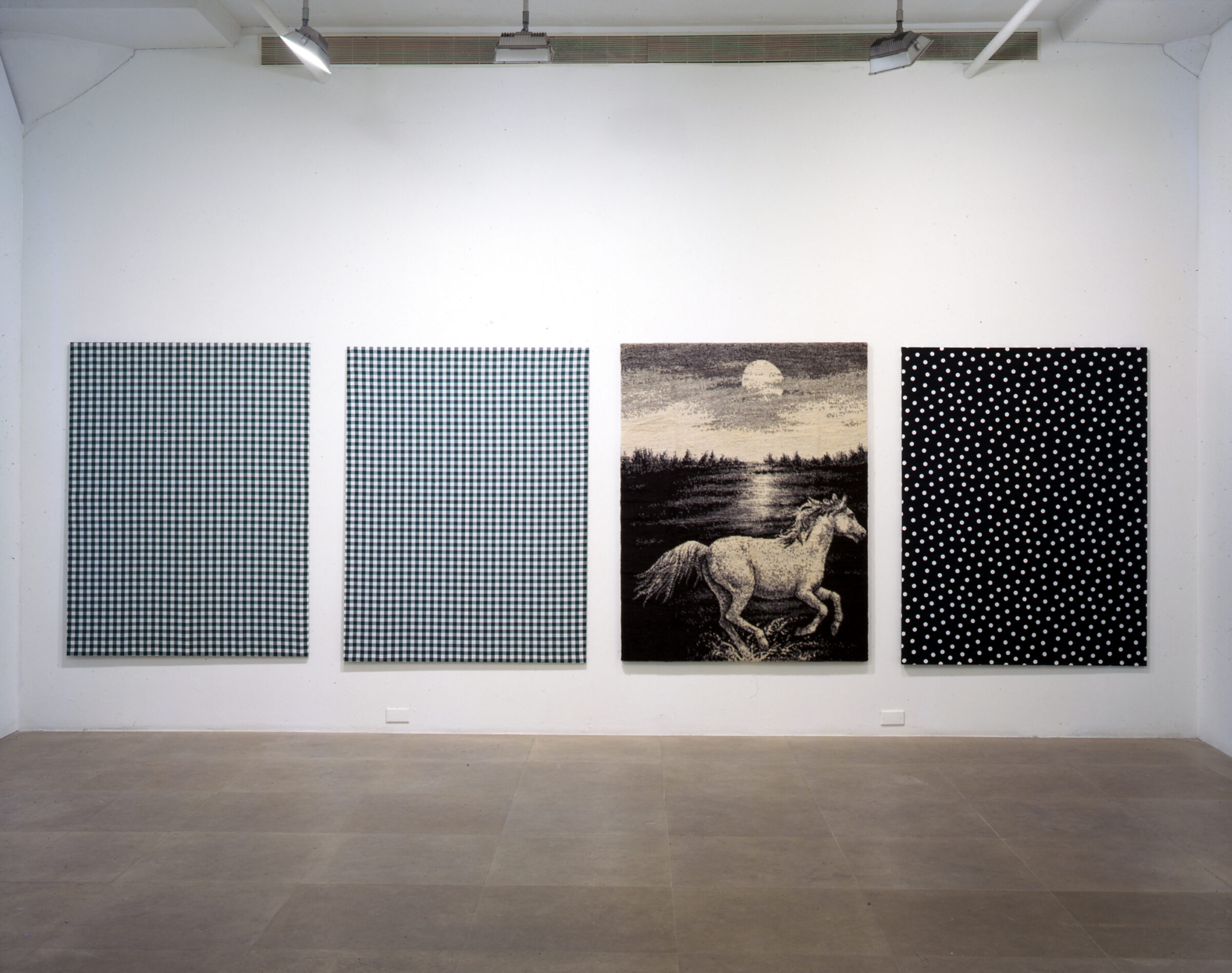Greene Naftali
Exhibition
Michael Krebber
Flaggs (Against Nature)
Greene Naftali, New York
Press Release
Download PDF

The Greene Naftali Gallery is pleased to present an exhibition of new work by Michael Krebber, opening Friday, March 21, 2003. The exhibition will run through Saturday, April 26.
One of the most important German artists working in the past two decades, Michael Krebber has exhibited widely throughout Europe, though his work has rarely been seen in the United States. A central figure in the Cologne art scene since the 1980s and a frequent collaborator with Martin Kippenberger and Cosima von Bonin, Krebber is perhaps best known for working within and against the conventions of painting. And yet, to call Krebber a "painter" is to invite a complicated set of discourses about what painting can and should be. Krebber’s practice is rife with ambivalence, provocation, intransigence and feinted gesture. His canvasses often explore the minimum of information necessary to begin signifying as paintings. The furtive lines, hasty marks and first hints of figuration and ground that frequently make up Krebber’s exhibited works suggest that his real energies are to be found in the agonizing superabundance of sublimated forethought and self-consciousness that bind image and gesture to any larger meaning-context. Left off, halted, poignantly or pathetically stuck, repeated again: Krebber’s practice forces a recognition of superfluity.
Krebber’s position may be called disaffirmative. The hollowness or absence of his work is more cultural (and by extension psychological) than phenomenological. This is to say that it may be impossible to understand his works without considering the contexts—discursive, art historical, commercial, and aesthetic—in which they appear. In the late-80s moment of post-painting institutional critique, where political imperatives were linked to collaborative project and site-specific work, Krebber maintained the possibility, however abject, for painting to contain the kind of rigorous self-critique the wider art-world had arrogated to other media and social investigation. In this way, he developed the somewhat misleading reputation as a "painter’s painter." Conversely, in the present context of painting’s reemergence as a genre without critical frame, projected onto a horizon defined less by discursive attention than by market interest, Krebber refuses to participate or identify. This double-life, negatively attuned to context and projections—what the artist calls "traps"—allows him to steer his practice beneath the radar of easy critical or commercial consensus. One is led to a line from Wols’ Aphorisms (1944), "The most beautiful works are the least manifest. Brilliant great works (visible everywhere) are cheap, require some external efforts, give relief, but are not worth the trouble."
This is Krebber’s first solo exhibition in New York since he exhibited with Luhring-Augustine in 1993. In Europe, his work was the subject of a large survey at the Kunstverein Braunschweig (1999) and has been exhibited frequently in galleries and museums, including Villa Arson, Nice; Museum Fredericianum, Kassel; Stedelijk Museum, Amsterdam; and Galerie Christian Nagel. Krebber is a frequent contributor to Texte zur Kunst and Starship and currently teaches at the Städel Schule in Frankfurt.


